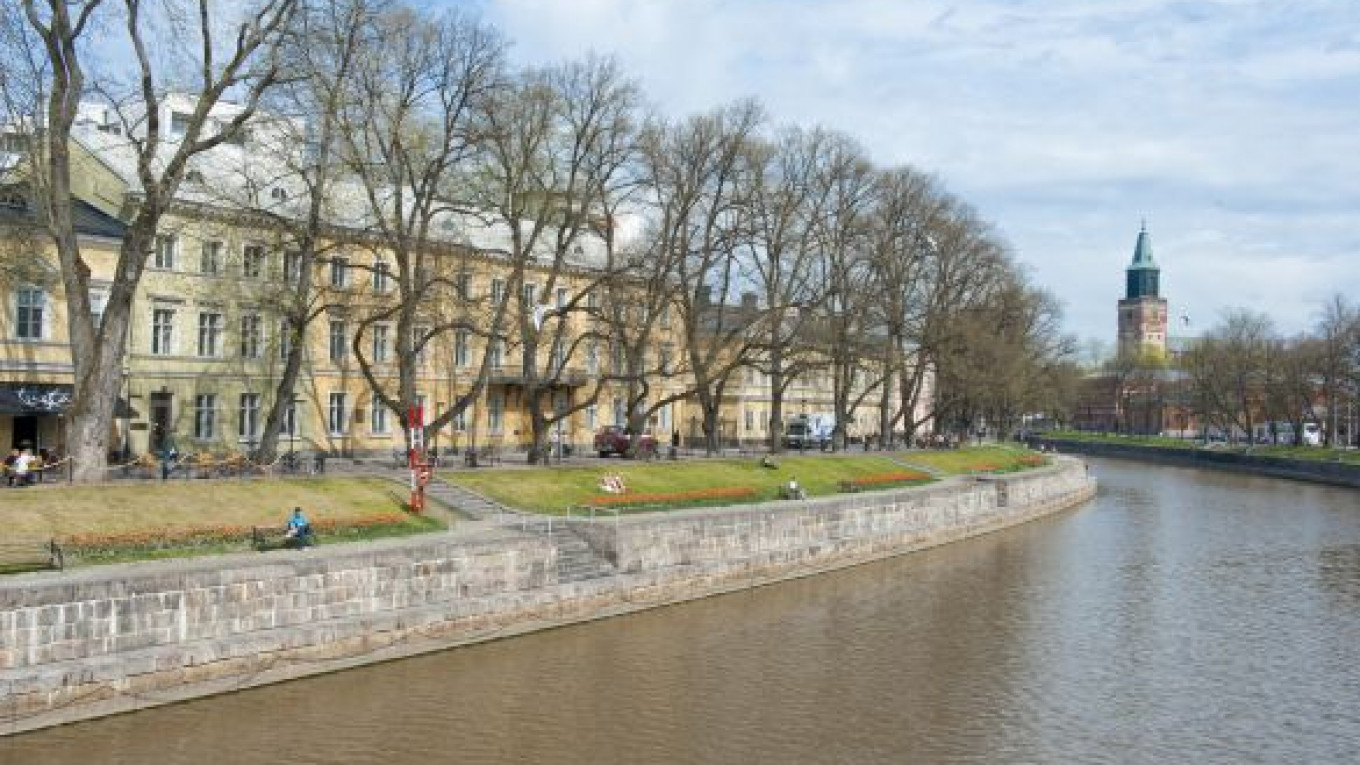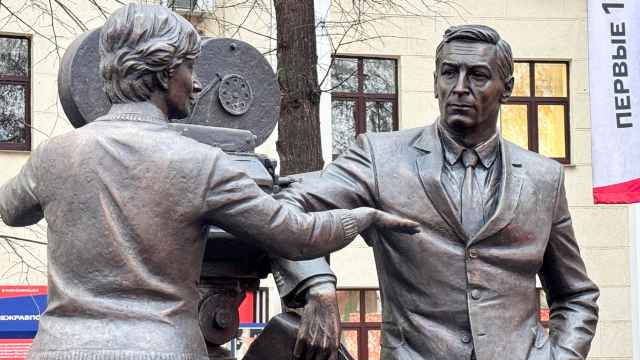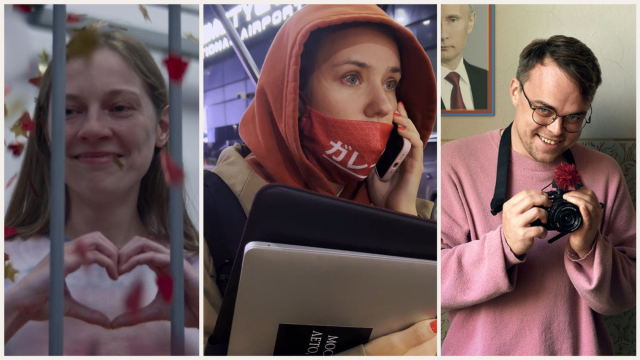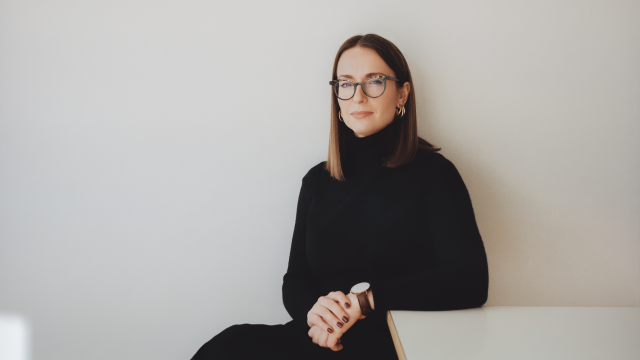TURKU, Finland — Turku, Finland’s oldest city, is Europe’s official Capital of Culture in 2012, and that is a perfect excuse to visit this charming place.
Turku was the country’s first capital, and locals regard the inhabitants of Helsinki in much the same way as St. Petersburg residents regard Muscovites: “You may be the official capital, but we’ve got the history and the culture.”
The city was founded on the shores of the Aura River in the 13th century, and it quickly became an industrial and trade center. At the time, Finland was part of Sweden, and Turku, or Abo in Swedish, was the largest and most important Finnish city. Turku’s castle and cathedral recall this era, and visitors will find themselves transported into the Middle Ages.
The Finns have a great reverence for their history and carefully preserve all remaining evidence of previous eras, even if the events marked are negative. Turku burned down on several occasions, and a vast fire in 1827 almost entirely destroyed the city. On that occasion, huge numbers of citizens had traveled to a fair in Tampere, so there was no one to put the fire out. The strong wind quickly caused the fire to spread through the neighboring wooden houses, and the entire city was burnt down, although hardly anyone was harmed.
The city was eventually rebuilt along a new plan that featured straight, broad streets and houses constructed in stone. The fire cleared the way for the new Turku, and the fire is not just seen as a page in the history of the city: It’s also a theme for an exhibition entitled “Fire, Fire” in the Logomo cultural center and the subject of a rock musical entitled “Infernal Music.”
This fantastic spectacle of light, sound and special effects to energetic rock tracks, on the night the reporter attended, inspired waves of stormy applause.
The Finns consider that the awarding of the status of European Capital of Culture for the year to the city is an enormous achievement for Finnish culture. Tourists traveling to Turku this summer are promised an abundance of both the historic and the ultramodern throughout their visit.
The year’s program includes about 150 incredibly varied projects: “poetry portraits,” the weaving of carpets depicting tales, wrestling to accordion accompaniment and, of course, “Finnish sauna as a work of art,” including a transparent sauna right in the middle of the city.
An old steam engine depot has been turned into the ultramodern Logomo exhibition and theater center, becoming the main cultural arena in the life of Turku, featuring a series of exhibitions and other projects: a UEFA soccer exhibition, a chance to put out a fire using equipment from bygone eras, a rock musical and an art cafe.
A variety show by Cirque Dracula can be seen through Aug. 14. From Aug. 26 to 28, the Tall Ship’s Regatta will sail into town, mooring up on the shores of the Aura.
Getting There
Many Russians living in the northwest of Russia love visiting Finland, but detest the road journey as far as Vyborg, the Russian town that lies just before the Finnish border. And the border itself isn’t much better; for some reason it appears to be perpetually rainy, it’s often foggy, there are great convoys of trucks, queues and forms to fill in, and no end to bureaucratic hassles. On this trip, however, the reporter traveled for the first time on the new high-speed train, the Allegro, and discovered that getting to Helsinki has just become immeasurably more comfortable. Hop on, and 3 1/2 hours later you’re in the Finnish capital. Passport and customs procedures take place on board, the stops are brief, and you can work on your computer with ease. You can travel on from Helsinki to Turku by train or by bus.
What to See
Turku Cathedral holds a central position in the Lutheran Church of Finland as the country’s official national shrine. Originally built in the 13th century, it not only features a wealth of medieval detailing but also hosts modern exhibitions.
Turku Castle has protected the mouth of the Aura River since 1280, and it has had a dramatic, action-packed history. Excursions, offered in various languages, are well worth taking around the castle and will give you a chance to meet a “living” king who will knight men and enroll women as frauleins, free of charge.
An even more fascinating place in Turku is the Luostarinmäki craft museum. It’s the only district in Turku that survived the destructive fire. Later, the historic buildings were turned into craft workshops, and now visitors can send a letter from the old post office or observe bootmakers or clockmakers at work.
The Islands and Naantali
The Turku Archipelago comprises about 20,000 islands. Take the old Ukkopekka ferry to one of them, and dine out in the open air to the accompaniment of live music and dancing.
In the summer, the islands are popular fishing destinations and offer bike rentals as well. There are nine ferry routes between the islands, along with 12 bridges, so touring by car is also an option.
From Turku, you can take a 20-minute ferry to Naantali, the fairy-tale land of the Moomin Trolls, the creations of the writer Tove Jansson — a perfect day out for the kids. On the pirate pier, they can capture a ship, and there’s also a castle to explore. In the Fisherman’s Village, you can meet the local inhabitants’ pets and try panning for gold.
The Finns are expecting 2 million tourists to visit Turku for the cultural capital events.
A full schedule and program are available at . For a Russian-language schedule, see .
A Message from The Moscow Times:
Dear readers,
We are facing unprecedented challenges. Russia's Prosecutor General's Office has designated The Moscow Times as an "undesirable" organization, criminalizing our work and putting our staff at risk of prosecution. This follows our earlier unjust labeling as a "foreign agent."
These actions are direct attempts to silence independent journalism in Russia. The authorities claim our work "discredits the decisions of the Russian leadership." We see things differently: we strive to provide accurate, unbiased reporting on Russia.
We, the journalists of The Moscow Times, refuse to be silenced. But to continue our work, we need your help.
Your support, no matter how small, makes a world of difference. If you can, please support us monthly starting from just $2. It's quick to set up, and every contribution makes a significant impact.
By supporting The Moscow Times, you're defending open, independent journalism in the face of repression. Thank you for standing with us.
Remind me later.






